

Xcode plugin to format code using Uncrustify or ClangFormat.
Download here : https://github.com/benoitsan/BBUncrustifyPlugin-Xcode/releases
Openframeworks formating (replace content of uncrustify.cfg in /Content/Resources)
Copy plugin in /Library/Application Support/Developer/Shared/Xcode/Plug-ins/
The Krubera Cave (Georgian: კრუბერის გამოქვაბული; or the Voronya Cave, sometimes spelled the Voronja Cave) is the deepest known cave on Earth. It is located in the Arabika Massif of the Gagrinsky Range of the Western Caucasus, in the Gagra district of Abkhazia, breakaway region of Georgia.[1][note 1]
The difference in the altitude of the cave's entrance and its deepest explored point is 2,197 ± 20 metres (7,208 ± 66 ft). It became the deepest-known cave in the world in 2001 when the expedition of the Ukrainian Speleological Association reached a depth of 1,710 m (5,610 ft) which exceeded the depth of the previously deepest cave, Austrian Alps, by 80 m. In 2004, for the first time in the history of speleology, the Ukrainian Speleological Association expedition reached a depth greater than 2,000 m, and explored the cave to −2,080 m (−6,824 ft). Ukrainian diver Gennadiy Samokhin extended the cave by diving in the terminal sump to 46 m depth in 2007 and then to 52 m in 2012, setting successive world records of 2,191 m and 2,197 m respectively.[2][3] Krubera remains the only known cave on Earth deeper than 2,000 metres.

The NAICA Crystal cave is located 300 meters below ground. filled with enormous, spectacular selenite or moonstone crystals, it reveals its beauty in an atmosphere where the its icy appearance constrasts with the high temperatures in the depths. through the magnificence of its crystals, it leads us down a myriad of paths: scientific, technological, artistic, philosophical and one involving the magic of nature. it also brings us face to face with an unavoidable responsibility: our obligation to protect and preserve it.
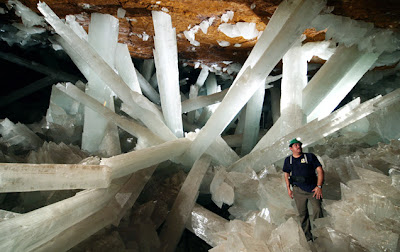
Tim and Eric Awesome Show, Great Job! is an American sketch comedy television series, created by and starring Tim Heidecker and Eric Wareheim, which premiered February 11, 2007 on Cartoon Network's Adult Swim comedy block[1] and ran until May 2010. The program features surrealistic and often satirical humor (at points anti-humor), public-access television–style musical acts, bizarre faux-commercials, and editing and special effects chosen to make the show appear camp.
We are the best site for downloading FREE public domain Golden Age Comics. All files here have been researched by our staff and users to make sure they are copyright free and in the public domain. To start downloading just register an account and enjoy these great comic books. We do not charge per download and the goal of the project is to archive these comic books online and make them widely available.
A floating orb that explores and manipulates transitional public spaces with particular acoustic properties. By recording and replaying these ambient sounds, the hovering sphere produces a delayed echo of human activity.
Electronics were programmed and inserted into the sphere in order to record and replay the surrounding sounds. Find out more: bit.ly/1cjvquk
A collaboration between Julinka Ebhardt, Francesco Tacchini and Will Yates-Johnson from the Royal College of Art.
Anrealage named this collection “low” in reference to low resolution, or pixilated graphics. Certainly, a mosaic-like print was the star of this collection, splashed all over tailored jackets, dresses, tights, shoes and eyewear. There was even a piece that looked like jeans bleached with a pixel pattern. Even the “polkadot” patterns are actually pixellated when seen up close…



OpenKnit is an open-source, low cost (under 550€), digital fabrication tool that affords the user the opportunity to create his own bespoke clothing from digital files. Starting from the raw material, the yarn, and straight to its end use, a sweater for example, in about an hour. Designing and producing clothes digitally and wearing them can now happen in the very same place, rewarding the user with the ability to make decisions regarding creativity and responsibility.

It can be a tricky task to debug and visualize realtime data on the Arduino board. You are usually stuck with the standard serial output, as the complexity of your Arduino code grows this makes it impossible to comprehend what is actually going on inside the board. To solve this I have created a little library that will enable you to create your own custom GUI for your Arduino projects.
Sam Harris (born 1967) is an American author, philosopher, public intellectual, and neuroscientist, as well as the co-founder and CEO of Project Reason. He is the author of The End of Faith (2004), which won the PEN/Martha Albrand Award for First Nonfiction in 2005 and appeared on The New York Times best seller list for 33 weeks, Letter to a Christian Nation (2006), The Moral Landscape (2010), and, most recently, Free Will (2012).

John Hess traces the evolution of the screen shape from the silent film days through the widescreen explosion of the 50s, to the aspect ratio of modern digital cameras.
This lesson is part of the FilmmakerIQ course: "Everything You Need To Know about Aspect Ratio"
filmmakeriq.com/courses/everything-you-need-to-know-about-aspect-ratio
http://news.gestalten.com/motion/john-stezaker
In an image-saturated world, British collage artist John Stezaker rather creates more with less. Cutting up yesterday photographs, subtracting pieces, and juxtaposing faces, he transforms forgotten photographs and postcards into symbolic portraiture of modernism. Stezaker’s artistic interests in examining hidden relations between images have bestowed international success and recognition upon him and his collage art. Gestalten.tv had a precious opportunity to speak with the artist at his exhibition in Berlin’s Capitain Petzel Gallery. Featured in the celebrated group exhibition The Age of Collage, his topical work is now on display at Gestalten Space in Berlin until January 12, 2014. The accompanying book The Age of Collage: Contemporary Collage in Modern Art takes an insightful behind-the-scenes look at those working with this interdisciplinary and cross-media approach.

Dazzle camouflage, also known as razzle dazzle or dazzle painting, was a family of ship camouflage used extensively in World War I and to a lesser extent in World War II. Credited to artist Norman Wilkinson, it consisted of complex patterns of geometric shapes in contrasting colours, interrupting and intersecting each other.
Unlike some other forms of camouflage, dazzle works not by offering concealment but by making it difficult to estimate a target's range, speed and heading. Norman Wilkinson explained in 1919 that dazzle was intended more to mislead the enemy as to the correct position to take up than actually to miss his shot when firing.
Dazzle was adopted by the British Admiralty and the U.S. Navy with little evaluation. Each ship's dazzle pattern was unique to avoid making classes of ships instantly recognisable to the enemy. The result was that a profusion of dazzle schemes was tried, and the evidence for their success was at best mixed. So many factors were involved that it was impossible to determine which were important, and whether any of the colour schemes were effective.
Dazzle attracted the notice of artists, with Picasso notably claiming cubists had invented it. The vorticist artist Edward Wadsworth, who supervised the camouflaging of over 2,000 ships during the First World War, painted a series of canvases of dazzle ships after the war, based on his wartime work.
This library of arts and music videos features This or That (a burlesque game show), the Coffee House TV arts program, punk bands from Punkcast and live performances from Groove TV. Many of these movies are available for free download.
IanniX is a graphical open source sequencer, based on Iannis Xenakis works, for digital art. IanniX syncs via Open Sound Control (OSC) events and curves to your real-time environment.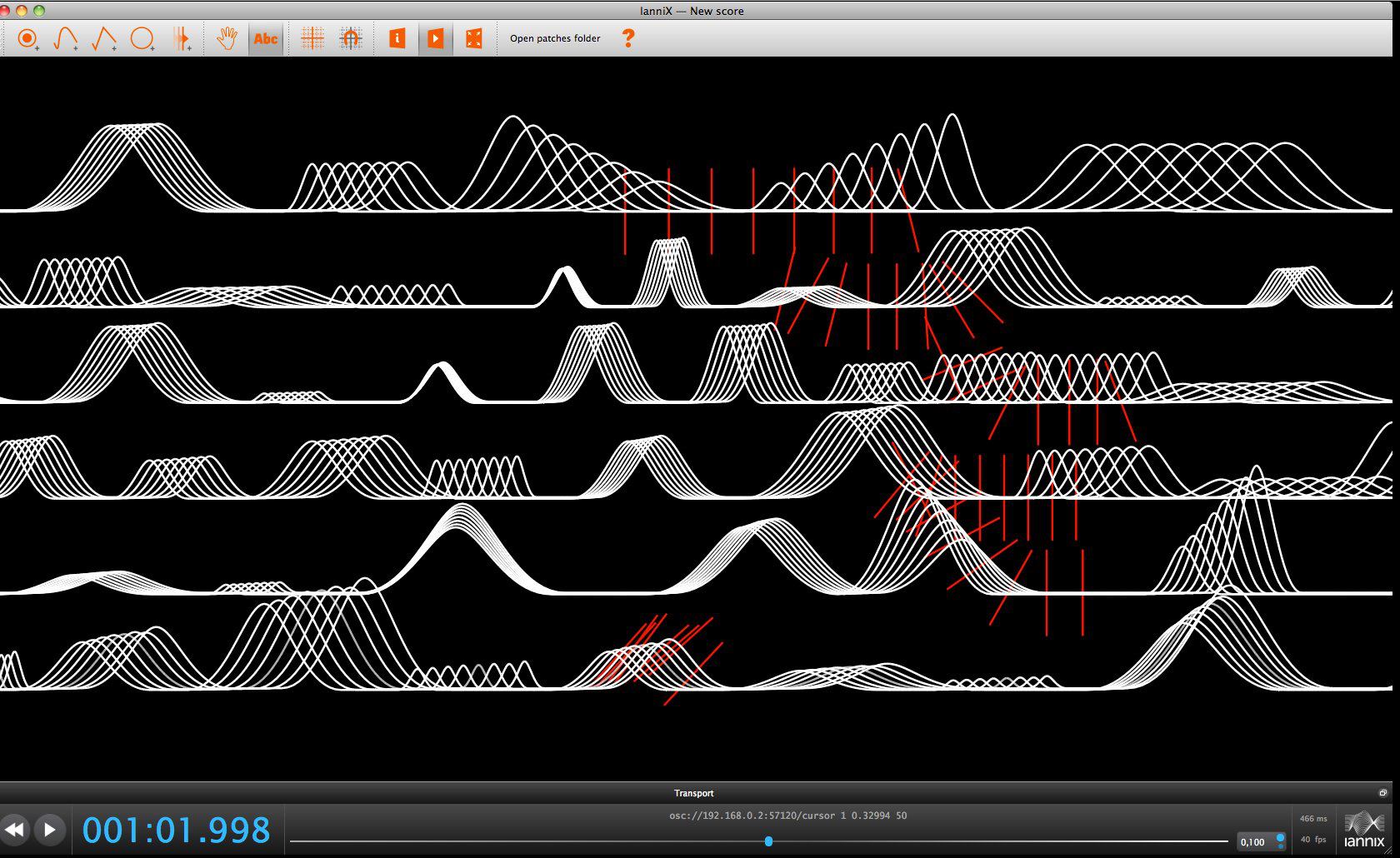

Vezér enables control of realtime video software, and any MIDI or OSC enabled environments, through the use of timeline based MIDI and OSC automations.
Performers :Maki Yokoyama , Saya Watatani , Tachun , Yusaku Mochizuki ,Tsuyoshi Kaseda
Director : Nobuyuki Hanabusa
Music : Yuko Sonoda ( Hanabusa Remix Version)
http://enra.jp
The DIY Cellphone is a working (albeit basic) cellphone that you can make yourself. It can make and receive phone calls and text messages, store names and phone numbers, and display the time. It builds on the hardware and software in the Arduino GSM Shield but extends it with a full interface, including display, buttons, speaker, microphone, etc. The source files for the cellphone are hosted on GitHub (hardware, software), which also includes an issue list where you can file bug reports or request enhancements. 
GrafX2 is a bitmap paint program inspired by the Amiga programs Deluxe Paint and Brilliance. Specialized in 256-color drawing, it includes a very large number of tools and effects that make it particularly suitable for pixel art, game graphics, and generally any detailed graphics painted with a mouse. The program is mostly developed on Linux and Windows, but is also portable on many other platforms. 



All three maps continue reasonate with me. The first offers us a stategic overlay. Which countries are powers/maintainers of the international system – which places are seeking to radical alter it, or cannot seem to become part of the core.
The second shows the virtual implications of that gap. Here, the gap between core and periphery is made starkly clear in technology use.
The final shows the physical manifestation of the gap. A stark reminder of the fences we build and the enormous sums of money and energy poured into keeping certain people out.
As a final note, I do think the third map is slightly misleading. As disturbing as it is, it is actually far, far too flattering to many traditional western powers as it continues to place them at the “centre.” In a world where the United States appears to be in decline this type of map makes China, Brazil, India and Russia (and even South Africa) look like non entities. Nothing could be further from the truth.
You will be able to touch to any web page by this bookmarklet. It's convenient.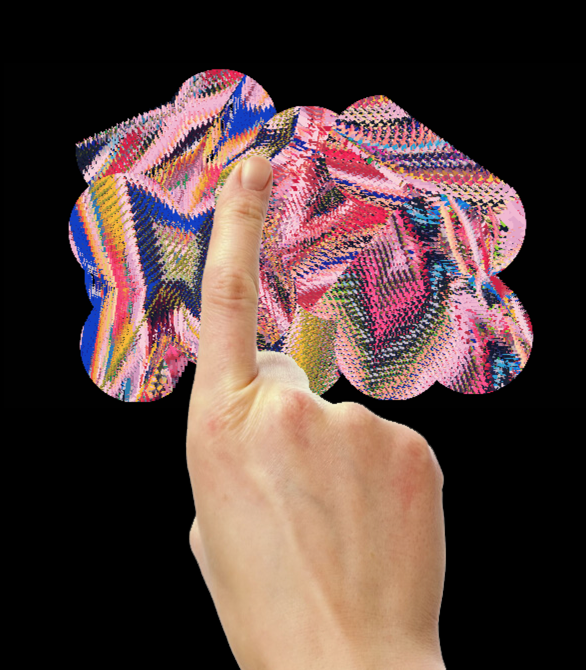
As GIF creators - OKKULT Motion Pictures is our brainchild - we know it's very easy to show/share an animated GIF on the web, but it's hard to find an offline GIF player to exhibit and sell a GIF as a single, unique artwork.
We have conceived, designed and handcrafted the Giphoscope with the objective of proposing to artists/galleries/
museums/collectors a minimalistic, unconventional, retrofuturistic analog GIF player, entirely tailor made andhandmade in Italy. Thanks to Giphoscope, animated GIF becomes a tangible and exclusive artwork.
The Giphoscope is inspired by the Mutoscope, an early motion picture device, patented by Herman Casler on November 21, 1894.
The Mutoscope worked on the same principle as the "flip book". The individual image frames were conventional black-and-white, silver-based photographic prints on tough, flexible opaque cards. Rather than being bound into a booklet, the cards were attached to a circular core. A reel typically held about 850 cards, giving a viewing time of about a minute (from Wikipedia).
Comment fonctionne une œuvre d’art ? Par quelle magie ce que nous avons ordinairement devant les yeux peut-il se voir investi d’une aura particulière ? Comment, à partir de quelles ressources, l’artiste peut-il créer un monde, un univers, qui ne ressemble à rien d’autre et qui pourtant, par le regard, la lecture ou l’écoute, tisse au sein de notre intimité un lien unique qui devient un ancrage salvateur dans notre vie quotidienne ?
Premier temps de notre semaine: c'est aujourd'hui en compagnie de Michel Guérin, penseur du geste, que nous allons remonter en amont de l’œuvre d’art, au moment où ce geste inouïe va se saisir de la matière pour créer.
“Crate Diggers” profiles people with extraordinary vinyl record collections, with owners displaying and telling the stories behind their collections.
<iframe src="http://www.youtube-nocookie.com/embed/AbIFFsPoshE?rel=0" frameborder="0" width="500" height="281"></iframe>
Mysterious British street artist Banksy, infiltrating New York with "Better Out Than In," on Friday introduced "Sirens of the Lambs."
It's art in motion. A slaughterhouse delivery truck is filled with plush animal toys, squeaking through the slatted boards of the truck. This display on wheels will be "touring the meatpacking district and then citywide for the next two weeks," according to the Banksy website.
Homoglyphi.cc is a simple tool for writing Unicode-calligraphy. The user can combine characters from the Astral Planes of the code structure to create alternative word-images. These can, for exempel, be pasted into typographically restrictive social media. The point of view of homoglyphi.cc is the basic character set of cloud-english.
A homoglyph is a symbol that has a similar form to another symbol. The Unicode Standard is a utopian masterplan where each archetypical symbol is given its own space in an immense skeletal structure reaching for the sky. The FAQ says: “Unicode covers all the characters for all the writing systems of the world, modern and ancient.” At the time of writing, 110,182 symbols are encoded. Many of these are homoglyphs. This offers possibilities for creative users wishing to embellish their writing.
The Standard defines a true essence beyond the stylesheet. Milleniums of human cilvilization snapped to a flat grid. This universal, ultimate standard is the codebook of global text-communication. On a material level this world of symbols depends on fonts, files installed on the local machines, to become visible. If the required font is missing the reader sees a crossed out box, a question mark or nothing.
Quote from http://www.openculture.com/2013/09/william-s-burroughs-explains-what-artists-creative-thinkers-do-for-humanity.html
The interview clip above, from the 1991 documentary Commissioner of Sewers, puts a two-part question to Naked Lunch author, “cut-up writing” master, and counterculture eminence William S. Burroughs: “What is the original feel of the writer? What mechanisms should he consider, work on?” That may sound like a slightly odd line of inquiry — the interviewer, bear in mind, doesn’t speak English natively — but Burroughs responds with an important point, clearly made. “The word should should never arise,” he first insists, though perhaps self-contradictorily. “There is no such concept as should in regard to art — or anything — unless you specify. If you’re trying to build a bridge, then you can say we should do this and we should do that, with respect to getting a bridge built, but it doesn’t float in a vacuum.” All well and good for engineering. But what can art do, if not build a bridge?
“One very important aspect of art is that it makes people aware of what they know and what they don’t know that they know,” Burroughs says. “This applies to all creative thinking. For example, people on the sea coast in the middle ages knew the Earth was round. They believed the Earth was flat because the church said so. Galileo tells them the Earth was round, and nearly was burned at the stake for saying so.” Burroughs summons as examples Cézanne, whose studies of what “objects look like seen from a certain angle and in a certain light” at first made viewers think “he’d thrown paint on canvas,” and Joyce, who “made people aware of their stream of consciousness, at least on a verbal level,” but “was first accused of being unintelligible.” Yet Burroughs found he lived in a world where, this art already having expanded humanity’s consciousness, “no child would have any difficulty in seeing a Cézanne” and few “would have any difficulty with Ulysses. The artist, then, expands awareness. Once the breakthrough is made, this becomes part of the general awareness.” Such insight makes Burroughs, as one Youtube commenter puts it, “so down-to-earth that he’s far-out.”
In the 2006 essay film The Pervert’s Guide to Cinema, Žižek offered psychoanalytic readings of such pictures as The Red Shoes, Alien, and The Matrix. (See him take on Vertigo in a clip featured here before.) Now he returns with a sequel, The Pervert’s Guide to Ideology.
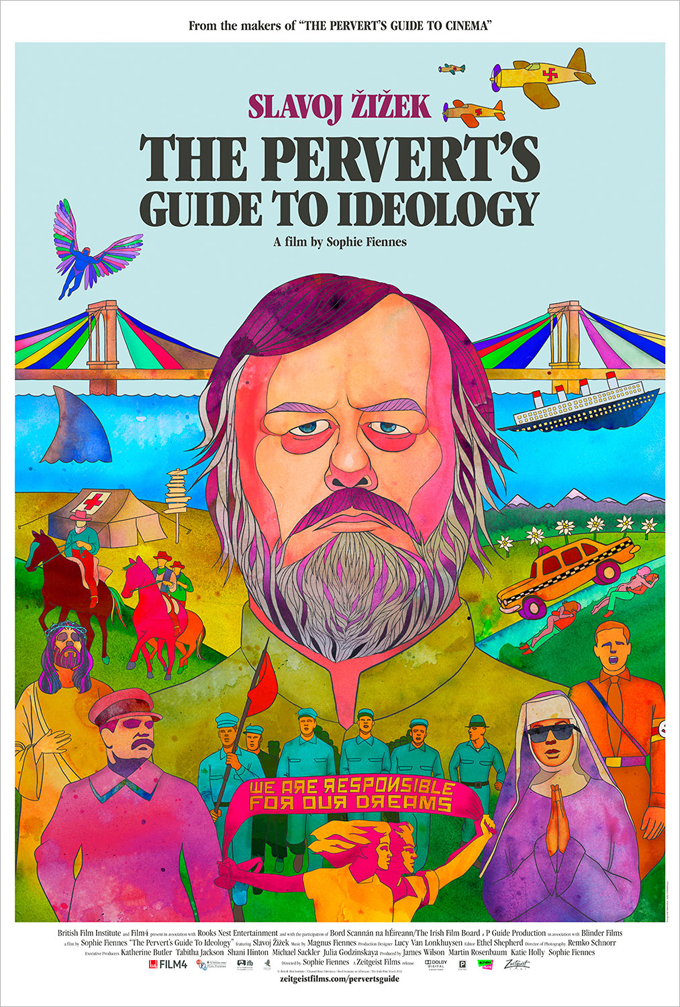
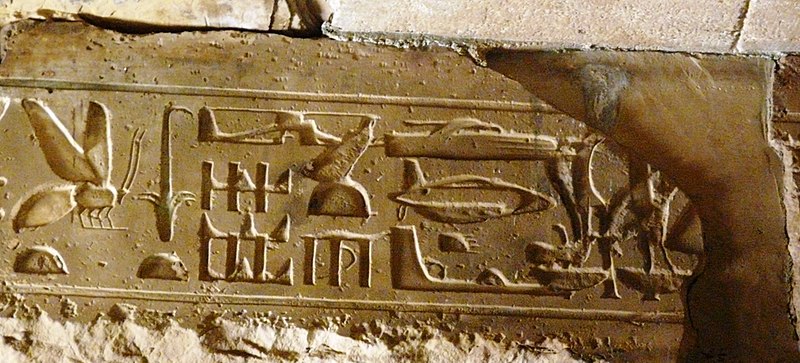
Out-of-place artifact (OOPArt) is a term coined by American naturalist and cryptozoologist Ivan T. Sanderson for an object of historical, archaeological, or paleontological interest found in a very unusual or seemingly impossible context[1] that could challenge conventional historical chronology by being "too advanced" for the level of civilization that existed at the time, or showing "human presence" far before humans were supposed to exist.
The term "out-of-place artifact" is rarely used by mainstream historians or scientists. Its use is largely confined to cryptozoologists, proponents of ancient astronaut theories, Young Earth creationists, and paranormal enthusiasts.[2] The term is used to describe a wide variety of objects, from anomalies studied by mainstream science to pseudoarchaeology far outside the mainstream, to objects that have been shown to be hoaxes or to have mundane explanations.
Critics argue that most purported OOPArts which are not hoaxes are the result of mistaken interpretation, wishful thinking, or a mistaken belief that a particular culture couldn't have created an artifact or technology due to a lack of knowledge or materials. Supporters regard OOPArts as evidence that mainstream science is overlooking huge areas of knowledge, either willfully or through ignorance.[2]
In some cases, the uncertainty results from inaccurate descriptions. For example: the Wolfsegg Iron was said to be a perfect cube, but in fact it is not; the Klerksdorp spheres were said to be perfect spheres, but they are not; and the Iron pillar of Delhi was said to be "rust proof", but it has some rust near its base.
Many writers or researchers who question conventional views of human history have used purported OOPArts in attempts to bolster their arguments.[2] Creation Science relies on allegedly anomalous finds in the archaeological record to challenge scientific chronologies and models of human evolution.[3] Claimed OOPArts have been used to support religious descriptions of pre-history, ancient astronaut theories, or the notion of vanished civilizations that possessed knowledge or technology more advanced than our own.[2]
GAmuza is an Hybrid Live Coding/Modular application, for interactive design developing, live audiovisual performance and generative art teaching.
Amongst the many freely available pieces of art released by Getty are a number of quite famous images, including work by Claude Monet, Vincent van Gogh, Rembrandt, and Leonardo da Vinci. The 4,600 pieces of artwork available are just the beginning, as well. Getty says that it's actively exploring the possibility of releasing much more art into the public domain, both from the museum's collection as well as materials from the Getty Research Institute's special collections. While Getty isn't the first museum to push forward with an open artwork initiative (the museum cited a number of institutions like the Walters Art Museum as inspirations for the movement), it's the latest example of how the internet is making classic, famous works more accessible.
Polybius is a supposed arcade game featured in an Internet urban legend. According to the story, the Tempest-style game was released to the public in 1981, and caused its players to go insane, causing them to suffer from intense stress, horrific nightmares, and even suicidal tendencies. A short time after its release, it supposedly disappeared without a trace. Not much evidence for the existence of such a game has ever been discovered.
Born in 1982. His works, centralising in real-time processed, computer programmed audio visual installations, have been shown at national and international art exhibitions as well as the Media Art Festivals. He is a recipient of many awards including the Excellence Prize at the Japan Media Art Festival in 2004, and the Award of Distinction at Prix Ars Electronica in 2008. Having been involved in a wide range of activities, he has worked on a concert piece production for Ryoji Ikeda, collaborated with Yoshihide Otomo, Yuki Kimura and Benedict Drew, participated in the Lexus Art Exhibition at Milan Design week. and has started live performance as Typingmonkeys.
These drawings are a methodical interpretation of A Thousand Plateaus: Capitalism and Schzophrenia by Gilles Deleuze and Felix Guattari.
Immersive 3d space bubble. Use chrome to see it
Happy Safari - Pie Brown
cedric Bernadotte : musique et montage,
Fred : Strentz
http://soundcloud.com/pie-brown/sets/lanpebre/

Total Recut provides online resources and social networking opportunities for fans and creators of video recuts, remixes and mash-ups. Users can watch videos or showcase their own work in the galleries, download copyright free source material to use in their own remix projects, learn about remix culture and copyright issues, undertake instructional video tutorials and enter contests to win prizes or just for fun.
Video recuts are short videos, usually found online, that remix found footage from various sources in new ways to create different interpretations and alternative meanings. The facilities and resources on this site are implemented utilising a wiki social network environment whereby registered users can add to and modify almost all content on the site e.g. submit videos to the galleries, rate, comment, update details, flag inappropriate content. Video recuts have become extremely popular on the web since video sharing networks like YouTube gave people the ability to broadcast their work to a potentially large audience for free.
Total Recut is a one stop shop for all things remixed. Users can browse, search and watch the latest recuts, enter competitions to win prizes and acclaim, use online video tutorials to improve their remixing skills, find out about and contact other remix artists and download copyright-free source material to use in their own work.